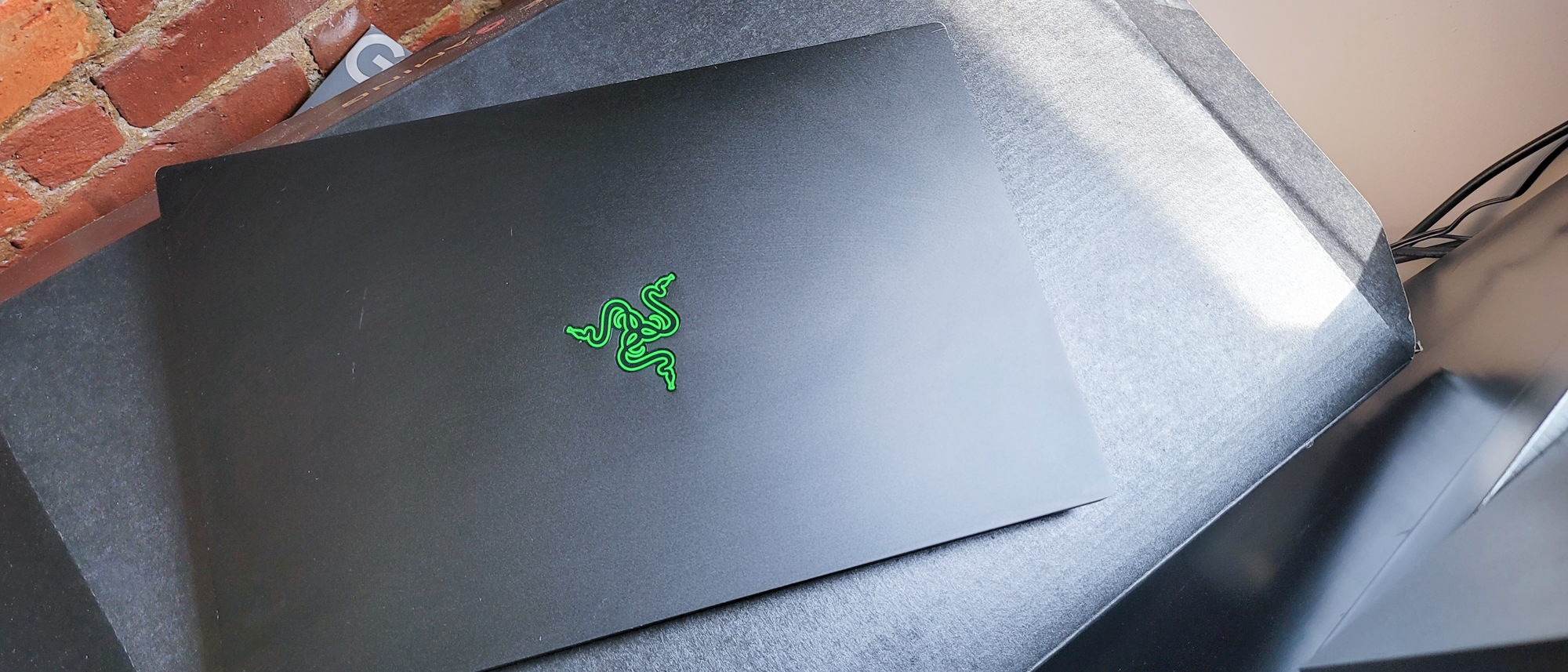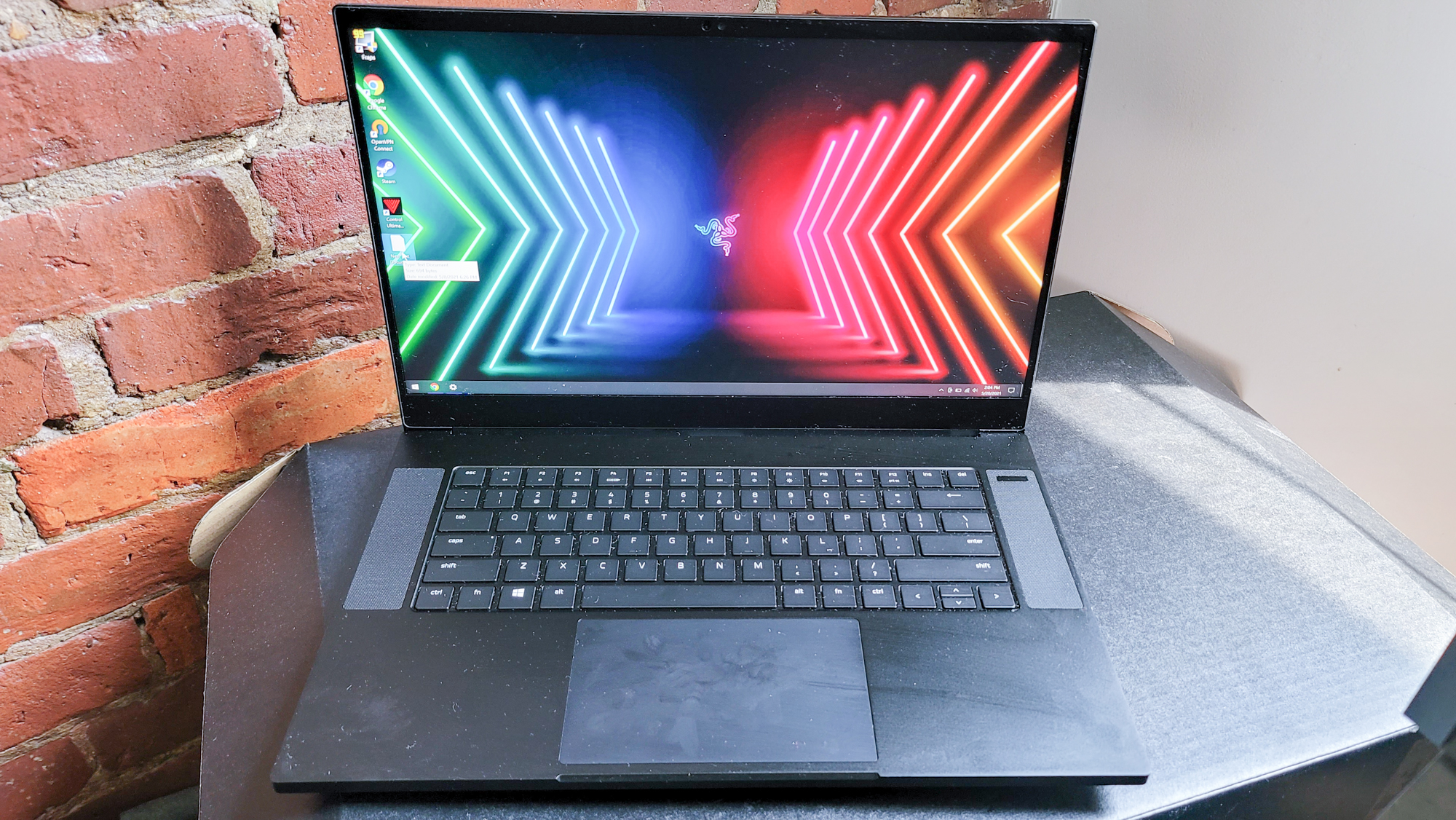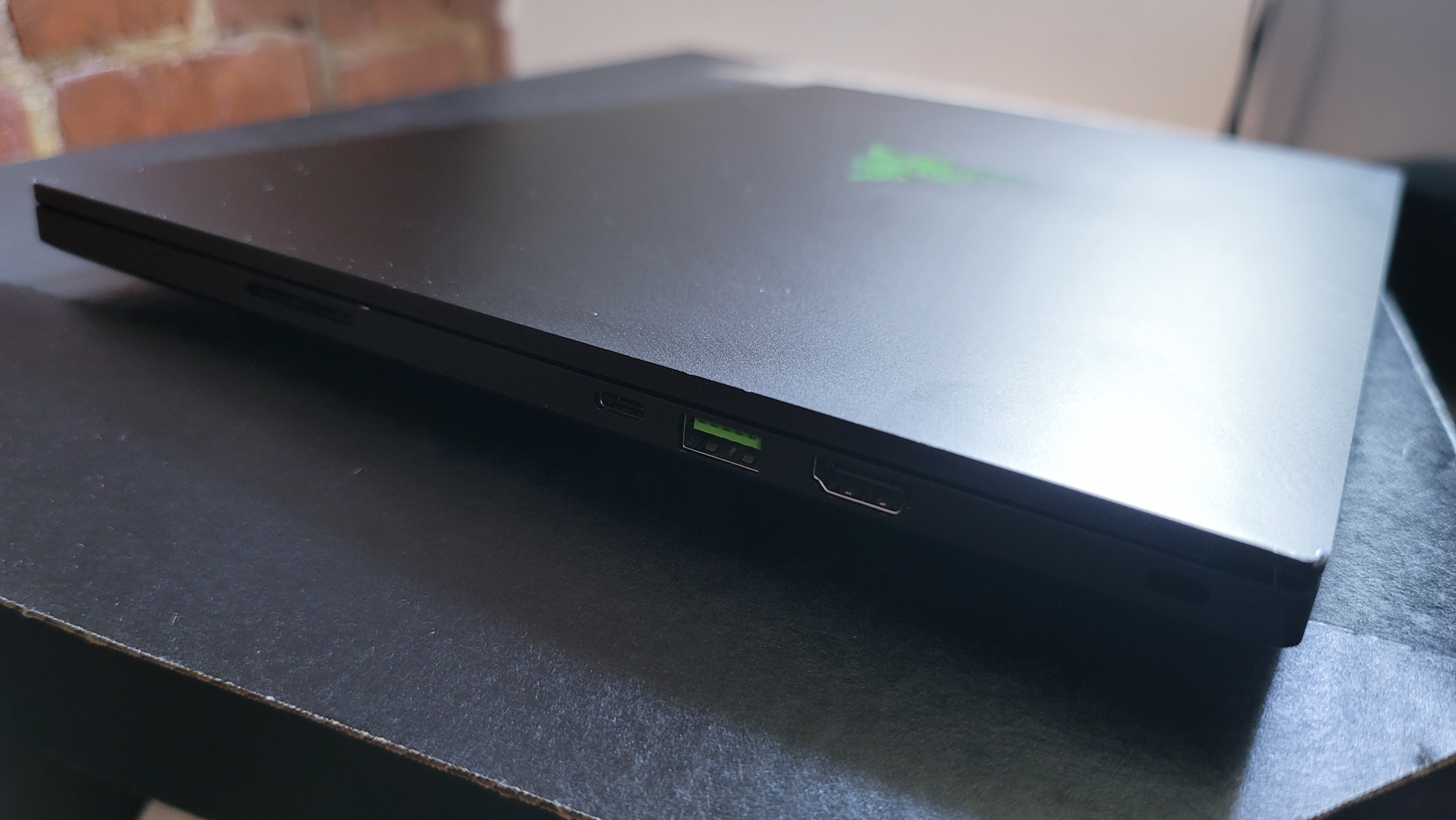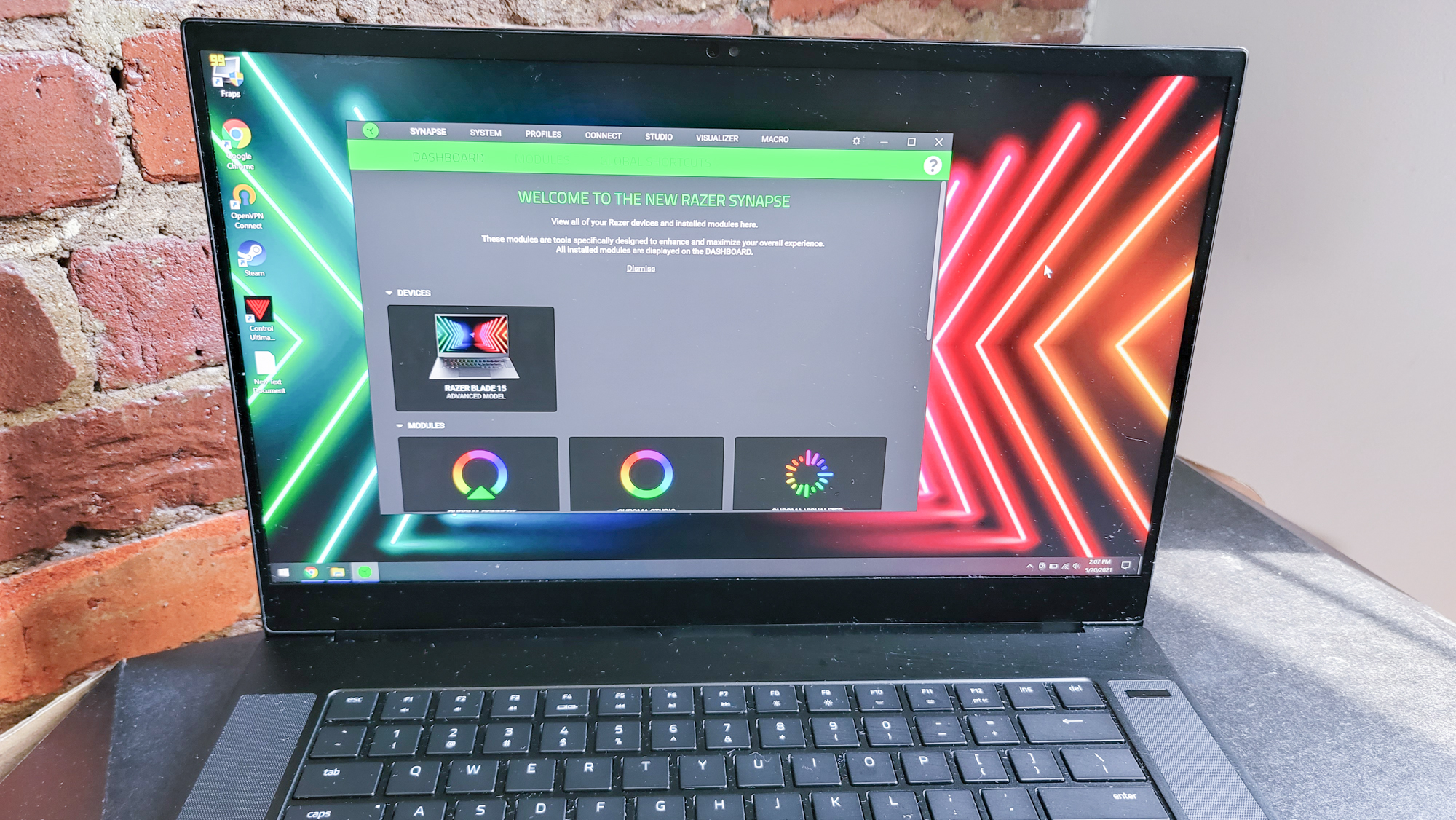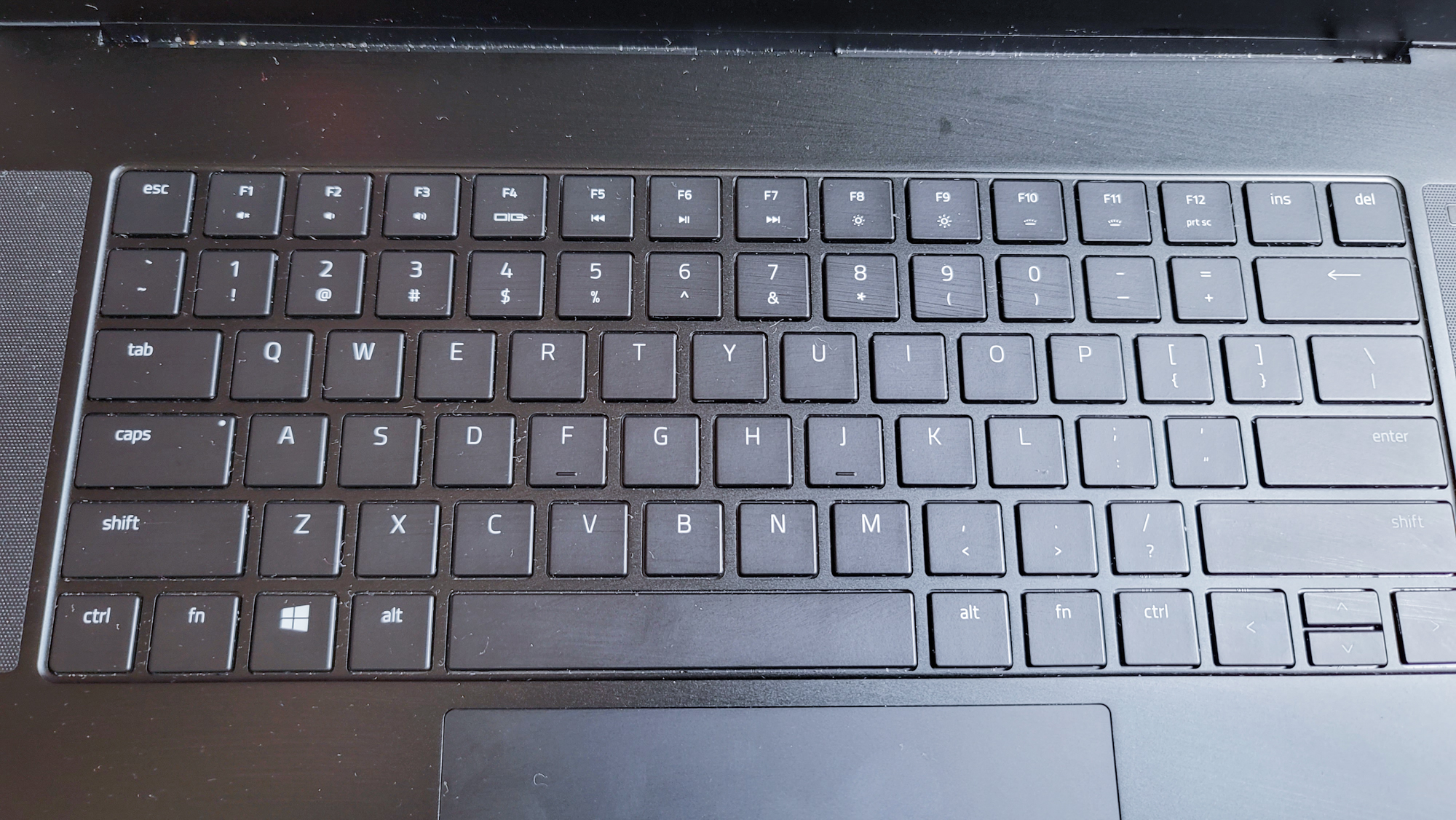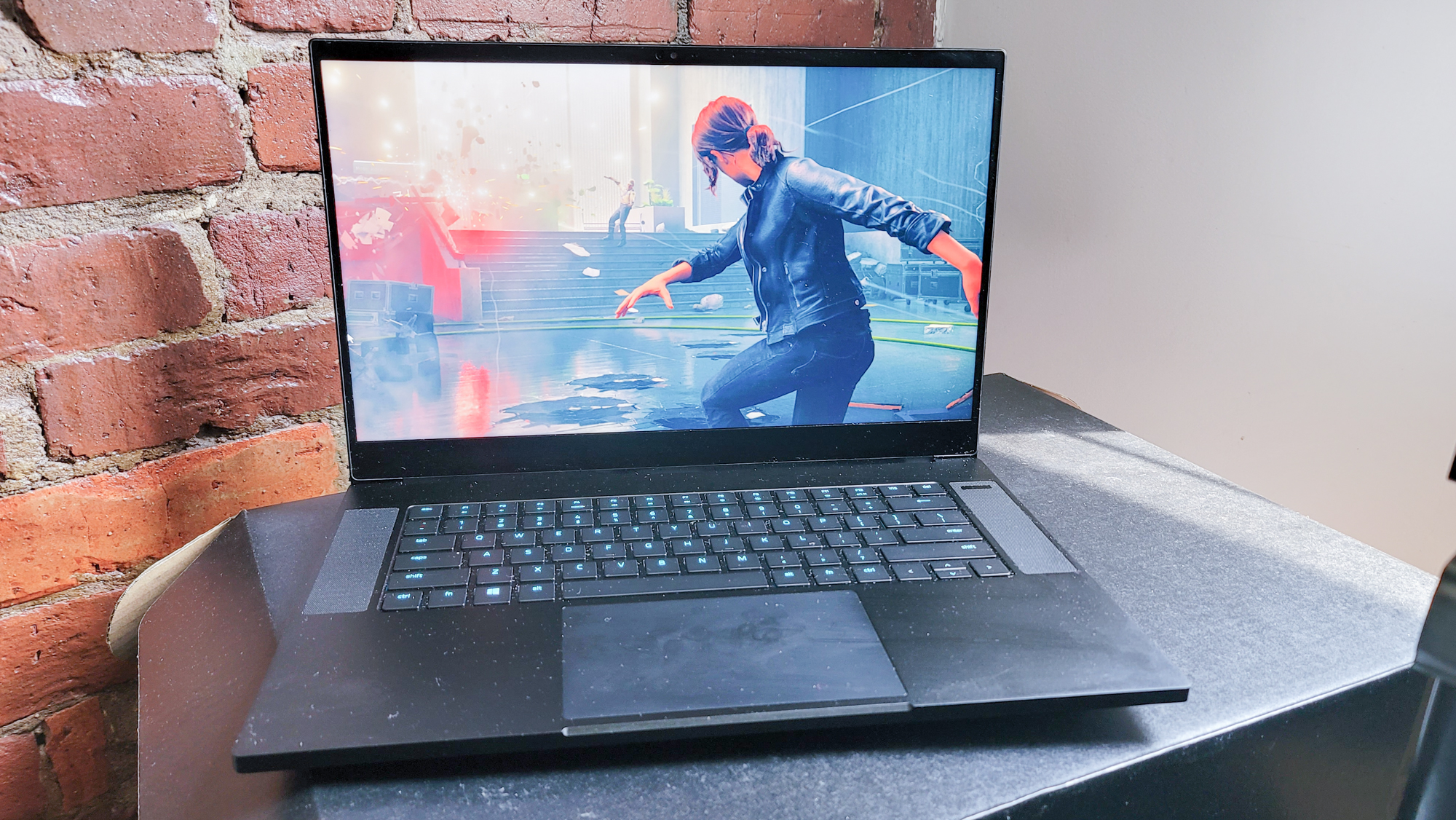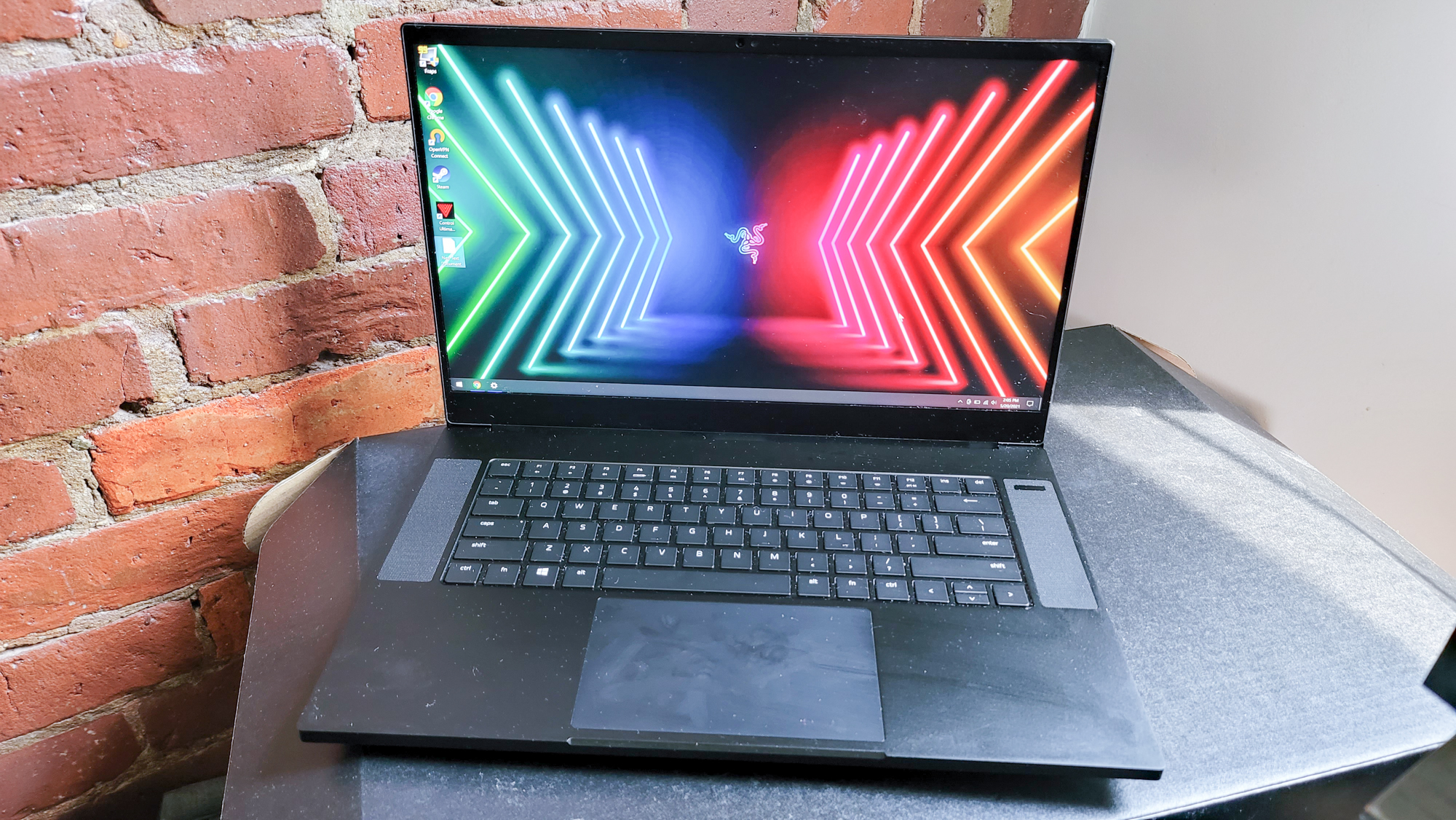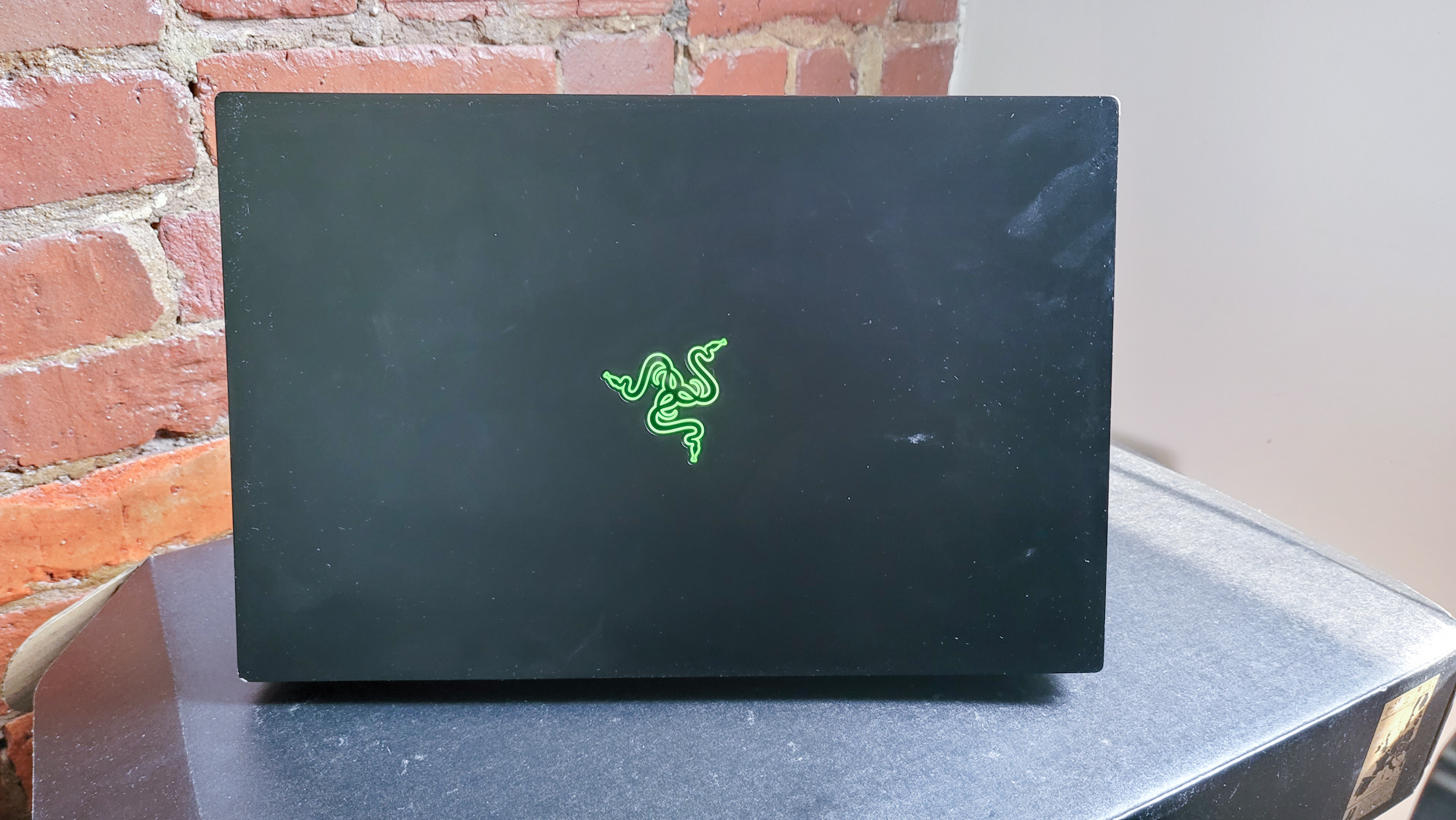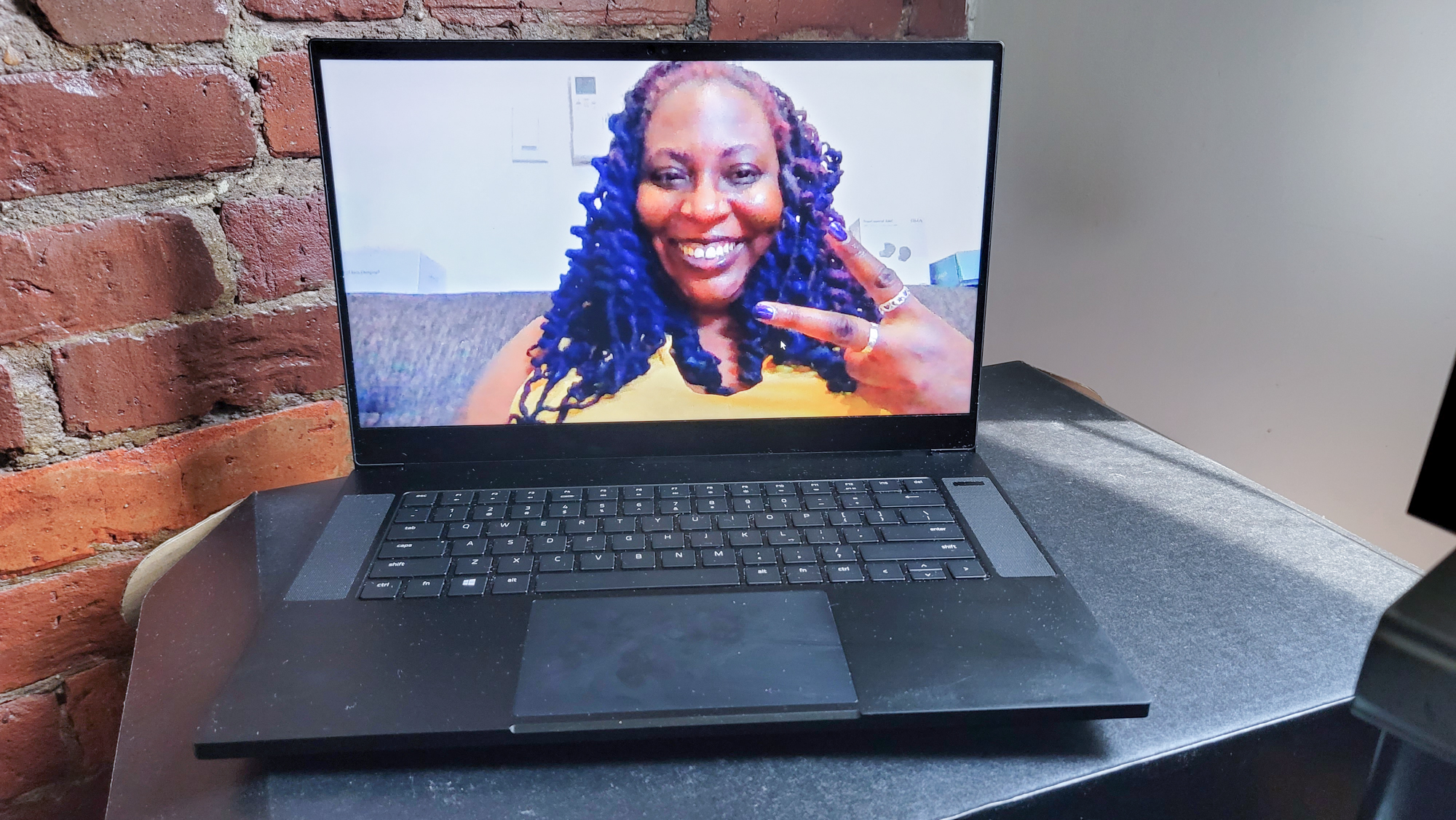Laptop Mag Verdict
The Razer Blade 15 Advanced Model serves up power, speed and portability in a gorgeous, slim chassis.
Pros
- +
Lightweight, attractive design
- +
Great overall and graphics performance
- +
Good battery life
- +
High refresh rate display
Cons
- -
Keyboard a bit mushy
- -
Dim screen
- -
Expensive
Why you can trust Laptop Mag
Build a better laptop and the gamers will beat a path to your door. With the latest version of the Blade 15 Advanced Model, Razer hasn’t made the perfect laptop, but it’s getting awfully close. Packing a 10th Gen Intel Core i7 processor and an Nvidia GeForce RTX 3080 GPU, the Blade 15 serves up tons of power in its 4.6-pound, 0.7-inch chassis.
Plus, you’ve got a display with a high refresh rate, good battery life and a few security features. It’s a tad pricey and the keyboard is a bit mushy, but if you’re in the market for a potent gaming powerhouse that has earned its way onto our best gaming laptops and best VR-ready laptops pages, you’ll be hard-pressed to outdo the Blade 15.
Razer Blade 15 pricing and configurations
The Razer Blade 15 is available in two flavors: Base and Advanced Model. I reviewed an iteration of the Advanced Model that costs $2,899. It’s equipped with a 2.3-GHz Intel Core i7-10875H processor, 32GB of RAM, a 1TB M.2 PCIe NVMe SSD, an Intel UHD Graphics GPU, an Nvidia GeForce RTX 3080 GPU with 16GB of VRAM, a 15.6-inch, QHD (2560 x 1440) display with a 240Hz refresh rate. An additional $400 gets you a 4K OLED panel with a 60Hz refresh rate. The “entry-level” model costs $2,199 and has half the RAM and storage with an RTX 2070 Super Max-Q with 8GB of VRAM and a 1080p display with a 360Hz refresh rate.
Razer’s most powerful Base Model costs $2,199 and has a 2.3-GHz Intel Core i7-10875H processor, 16GB of RAM, a 512GB M.2 PCIe NVMe SSD, an Intel UHD Graphics GPU, a RTX 3070 with 8GB of VRAM, and a QHD (2560 x 1440) screen with a 165Hz refresh rate. The lowest-priced system is $1,299 and comes equipped with half the storage capacity, an Nvidia GTX 1660 Ti GPU with 6GB of video memory, and a 1080p display with a 120Hz refresh rate.
Razer Blade 15 design
Sure, the Blade 15 has the same design we’ve been seeing for years but that doesn’t make it any less pretty. The onyx CNC-anodized aluminum chassis is still a head-turner, especially with Razer’s three-headed snake logo glowing like a mischievous will ‘o the wisp in the center of the lid. I do wish Razer allowed gamers to tweak the color in Synapse, like you can with the keyboard. But it’s a minor quibble at most considering how pretty the laptop is overall. Flip the laptop over and you’ll see two raised feet running the length of the system and a pair of vents.
Speaking of the keys, the Chroma-lit board glitters like a close, yet oh-so-far galaxy in the inky blackness of the keyboard deck. The effect is magnified when the screen is off. The keyboard is flanked by a pair of speakers -- the right one houses the power button at the very top. Below the keyboard sits the palm rest with a fairly large touchpad in the center.
Somehow, Razer continues to be one of the lightest and thinnest gaming laptops in the game. Weighing 4.4 pounds and measuring 14 x 9.3 x 0.7 inches, the Blade 15 is lighter and slimmer than both the Alienware m15 R4 (5 pounds, 14.2 x 10.9 x 0.7~0.8 inches) and the MSI GE76 Raider (6.4 pounds, 15.6 x 10.6 x 1.1 inches). The Asus ROG Flow X13 is a svelte, barely-there 2.9 pounds, 11.8 x 8.7 x 0.6 inches, but it’s also a 13-inch system compared to these 15.6-inch laptops.
Sign up to receive The Snapshot, a free special dispatch from Laptop Mag, in your inbox.
Razer Blade 15 security
Hey, even gamers need a bit of security now and then. For those occasions, Razer has a few tricks up its sleeve including a Windows Hello-compatible IR webcam, a Kensington lock and Intel PTT (Platform Trust Technology), which is similar to TPM which stores protected information including system boot files. The big difference between PTT and TPM is that the former doesn’t require a dedicated processor or memory while the latter does. And just in case some sticky-fingered purloiner gets any ideas, the laptop also has a Kensington port, so you can secure the notebook in place.
Razer Blade 15 ports
Unlike the ultraportables out there with their skimpy port offerings, the Blade 15 has ports and slots to spare.
On the right, you have a USB Type-A 3.2 Gen 2 port, a Thunderbolt 3 port, HDMI 2.1, an SD card reader and a Kensington slot. Along the left are two more USB Type-A 3.2 Gen 2 ports, a Thunderbolt 3 port, a headset jack and a proprietary power port.
Razer Blade 15 display
Sharpness and vibrancy, that’s what the Razer Blade 15’s display is serving. Watching the trailer for Outside Story, I enjoyed the bounty of color as actor Brian Tyree Henry lounged on his couch. His head was supported by a pair of slightly faded throw pillows colored periwinkle and purple while clothed in a peach t-shirt. The bright yellow blanket in the background looked resplendent, drawing the eye to the weave pattern.
The Blade 15’s panel has a 240Hz refresh rate which translates into silky smooth rendering for gamers. It’s particularly beneficial for fans of first-person shooters as that smoking-fast rate makes for more accurate shooting. It definitely came in handy while I was running and gunning in Control. There’s a certain level of satisfaction watching the silvery and highly-reflective surface of a Hiss Cluster burst into a spray of turquoise health orbs.
I was a bit surprised to learn the Blade 15 managed to only reproduce 87.8% of the DCI-P3 color gamut. That result is below the 90% premium gaming laptop average. Still, it’s better than both the Raider and the Flow X13 which measured 69.9% and 53.9%, respectively. The Alienware m15 proved to be the most vivid at 149.5%.
The Blade 15’s panel averaged 244 nits, falling short of the 333-nit brightness category average. The Raider (276 nits), Flow X13 (282 nits) and Alienware m15 (362 nits) all had brighter displays.
Razer Blade 15 audio
Top-firing speakers? Yes, please. The Blade 15’s pair of speakers did a solid job of filling my smallish test space with clear audio. However, I do wish there was a bit more punch in the low-end. When I listened to The Layabouts, “Bring Me Joy,” the pulsing bassline I was hoping for was instead a determined tapping. Still, the synth, bass guitar, keyboard, percussion and vocals were clean.
The notebook comes pre-installed with THX Spatial Audio for PCs software. As the name intimates, the software creates the illusion of 360-degree audio when enabled, which is a cool effect when watching an explosion-heavy movie or a first-person shooter. However, as the effect greatly diffuses the audio, I prefer the THX Stereo option with either the Music or Game preset as they provide a more robust result.
Razer Blade 15 keyboard
The Blade 15’s island-style keyboard is lovely to look at, but I wish the keys had a bit more depth. I easily matched my 70 word-per-minute average on the 10fastfinger typing test. However, the keyboard was shallow for my tastes. It’s not uncomfortable, but I’d love not to bottom-out so quickly.
But Razer’s Synapse 3.0 software smooths over all wounds, allowing me to create a colorful masterpiece with the company’s Chroma pre-key lighting. It’s incredibly bright, meaning whether you’re in a well-lit room or darkened gaming nook, the Blade 15’s keyboard will put on a show.
My fingers slid across the 5.1 x 3.2-inch glass touchpad like skating on a freshly zambonied ice rink. Performing Windows 10 gestures such as pinch-zoom, two-finger scroll and three-finger flick was responsive and agile. The bottom corners offer a deep satisfying click when activating right and left mouse button functions.
Razer Blade 15 gaming, graphics and VR
The Razer Blade 15 is coming into the arena locked and loaded with an Nvidia GeForce RTX 3080 GPU with 16GB of VRAM to boot. And when the gaming dies down, the laptop switches over to its integrated Intel UHD Graphics. I made my way through the Medical Wing in Control on my way to the Panopticon and fought through a horde of Mold Hosts, dodging toxic projectiles, launching furniture, and of course, shooting. The action rendered smoothly, producing 67 frames per second at 1080p (High, DirectX 11). The framerate dropped slightly at 1440p to 60 fps.
The Blade 15 didn’t back down from the fight against the competition, delivering 74 fps on the 1080p Assassin’s Creed benchmark, beating the 64-fps premium gaming laptop average. The Alienware m15 with its RTX 3070 GPU hit 67 fps while the Flow X13 and Raider’s RTX 3080 GPUs obtained 68 and 73 fps, respectively. At 1440p, the Blade 15’s framerate dropped to 58 fps.
On the Shadow of the Tomb Raider test, we saw the Blade 15 notched 88 fps at 1080p, skating past the 79-fps average. It was enough to stave off the Flow X13 (68 fps) and Alienware (77 fps), but not the Raider which dropped 100 fps. Switching the resolution to 1440p, the Blade 15 reached 59 fps.
When we ran the Grand Theft Auto V benchmark, the Blade 15 reached 69 fps at 1440p. At 1080p, the laptop produced 107 fps, beating the 93-fps category average and slipping past the Flow X13’s 104 fps. However, it couldn’t overcome the Raider’s 120 fps.
During the 1080p RTX Metro: Exodus test, the Blade 15 got 62 fps, defeating both the 59-fps average and the Flow X13 (61 fps). Still, the Raider came out on top with a framerate of 77 fps. At 1440p, the Blade 15 put up 52 fps.
The Blade 15 threw a stiff jab during the Far Cry New Dawn test with 95 fps at 1080p (87 fps at 1440p). It was enough to trounce the 90 fps of the Raider and the category average. The Alienware nor the Flow X13 were any match at 91 fps and 83 fps.
When we ran Borderlands 3, the Blade 15 hit a respectable 81 fps at 1080 (57 fps, 1440p), which put it well above the 73-fps premium gaming laptop average and the Flow X13’s 77 fps. However, the Raider performed even better with 100 fps.
We also used the Red Dead Redemption 2 benchmark and saw the Blade 15 reach 52 fps at 1440p and 70 fps at 1080p. The latter result topped the 61-fps average as well as the Flow X13 (65 fps) and Alienware m15 (69 fps). The Raider served up a beefy 82 fps.
To test for VR readiness, we ran the VRMark Orange benchmark. The Blade 15 racked up 8,341, creeping past the 8,334 category average. It managed to beat the 8,079 put up by the Raider. The Alienware m15 and Flow X13 reached 8,540 and 10,296, respectively.
Razer Blade 15 performance
When the occasion arises, the Razer Blade 15 is more than capable of doing its fair share of work thanks to its 2.3-GHz Intel Core i7-10875H processor with 32GB of RAM and 1TB M.2 NVMe SSD. I watched Invincible on Amazon Video with 35 additional Google Chrome tabs in the background running a mix of Tweetdeck, Twitch, Google Sheets, YouTube and Google Analytics. The laptop shrugged off all my efforts to tax it with a shrug. It’s only when I launched Control in a bordered window that the fan whirred to life.
Still, we saw mixed results during our synthetic testing. For instance, the laptop only reached 6,531 on the Geekbench 5.4 overall performance test, failing to match the 8,131 premium gaming laptop average.
The Blade 15 also had a so-so showing on the Handbrake test, taking 9 minutes and 57 seconds to transcode a 4K video to 1080p. That’s slower than the 7:59 average as well as the Flow X13 (8:13, AMD Ryzen 9 5980HS CPU), Raider (7:24, Core i 7-10875H CPU) and Alienware m15 (7:07, Core i7-10875H CPU).
On the File Transfer Test, the Blade 15 duplicated 25GB worth of multimedia files with a transfer rate of 890.2 megabytes per second. It’s just a couple of points shy of the 890.7MBps average. The Blade 15 is still faster than the Flow X13 (779.5MBps, 1TB M.2 2230 NVMe PCIe 3.0 SSD). However, the Raider (1,076.8MBps, 1TB NVMe PCIe SSD) and Alienware m15 (1,147MBps, 1TB SSD) were faster.
Razer Blade 15 battery life
The Razer Blade 15 continues to impress on the battery life, lasting 5 hours and 14 minutes on the Laptop Mag Battery Test (continuous web surfing over Wi-Fi at 150 nits of brightness). That time is longer than the 4:15 premium gaming laptop average and the Alienware m15’s 4:01. However, the Flow X13 and Raider turned in times of 6:30 and 6:06, respectively.
Razer Blade 15 heat
Some like it hot. Thankfully, Razer isn’t one of those companies. We ran a game for 15 minutes and measured the Blade 15 in strategic spots. The touchpad measured 85 degrees Fahrenheit, which is below our 95-degree comfort threshold. The center of the keyboard and undercarriage exceeded the threshold at 103 and 113 degrees, respectively. But after gaming with the notebook in my lap for over an hour, my legs, while a little warm, were nowhere near uncomfortable.
After letting the Blade 15 cool down, we played a fullscreen video for 15 minutes and remeasured. The touchpad and middle of the keyboard reached 83 and 85 degrees, respectively, while the bottom hit 90 degrees.
Razer Blade 15 webcam
I was impressed with how well the Blade 15’s 720p webcam captured color. Not only did it accurately capture my skin tone, complete with its reddish undertones, but it also did a good job of catching the blue, purple, and pink in my locs and my mustard-colored blouse.
The detail wasn’t nearly as impressive as the visual noise mussed the edges of everything in the shot. I suggest investing in an external webcam if you’re looking to do any serious streaming.
Razer Blade 15 software and warranty
Outside of Synapse 3.0, THX software, and Windows 10 bloatware, the Razer Blade 15 is refreshingly free of app flotsam. Aside from creating a keyboard light show, Synapse is where you can set the performance mode, which controls fan speed.
The only useful third-party software is Nvidia Control Panel. The Blade 15 ships with a 1-year limited warranty. See how Razer fared during Tech Support Showdown and Best and Worst Brands, our annual special reports.
Bottom line
Lightweight, pretty and powerful. Those are the basic hallmarks of a Razer Blade. The latest iteration of the $2,999 Blade 15 Advanced Model raises the bar with a 10th Gen Intel Core i7 (11th Gen coming soon!) and an Nvidia GeForce RTX 3080 GPU. It’s the epitome of a portable powerhouse, plus you got that beautiful Chroma keyboard and a display with a fast refresh rate. Razer’s even providing gamers with a measure of security.
However, for all the Blade 15’s pros, it’s got some stiff competition. While the MSI GE76 Raider is cheaper, with better performance, longer battery life, and a brighter display, it is noticeably thicker and heavier than the Razer. If you need a lightweight gaming laptop that’s powerful and secure, you can’t go wrong with the Razer Blade 15.

Sherri L. Smith has been cranking out product reviews for Laptopmag.com since 2011. In that time, she's reviewed more than her share of laptops, tablets, smartphones and everything in between. The resident gamer and audio junkie, Sherri was previously a managing editor for Black Web 2.0 and contributed to BET.Com and Popgadget.
